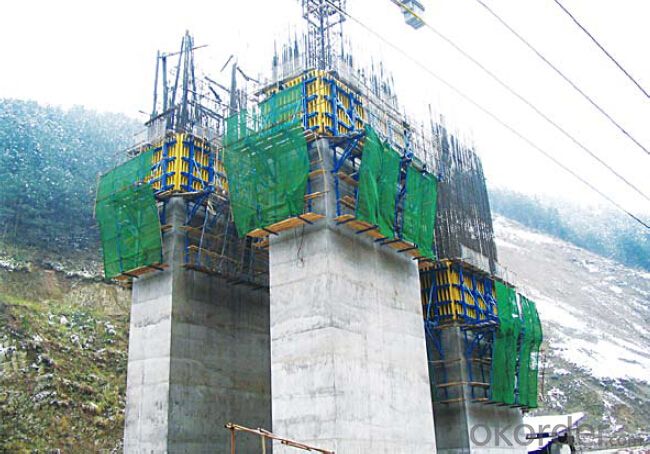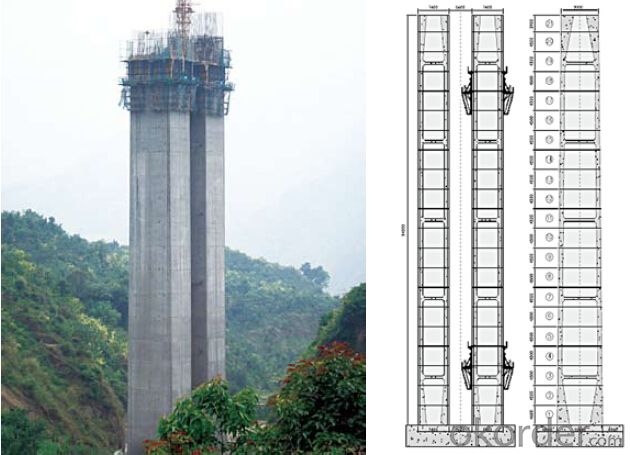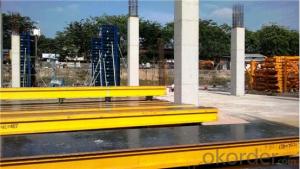Climbing Bracket CB240 for Formwork And Scaffolding Systems
- Loading Port:
- Tianjin
- Payment Terms:
- TT OR LC
- Min Order Qty:
- 50 m²
- Supply Capability:
- 1000 m²/month
OKorder Service Pledge
OKorder Financial Service
You Might Also Like
Climbing Bracket CB240 & CB210
They are framework brackets for supporting large-area wall formwork.
Typical applications for the CB240&CB210 are pier and column/shear wall/core walll/ in the
building.
CB210 has smaller size than CB240, it will be cost effective in some condition.
Characteristics:
◆ High bearing capacity
The high loading capacity of the brackets allow very large scaffold units. This saves the number
anchor points required as well as reducing climbing times.
◆ Simple moving procedure by crane
Through the strong connection of formwork together with the climbing scaffold, both can be moved
as a single climbing unit by crane. Thus valuable time-savings can be achieved.
◆ Fast striking process without a crane
With the retrusive set, large formwork elements can also be retracted quickly and a minimum of
effort.
◆ Safe with work platform
The platforms have assembled firmly with bracket and will be climbing together, without scaffolding
but can work safely in spite of your high location.
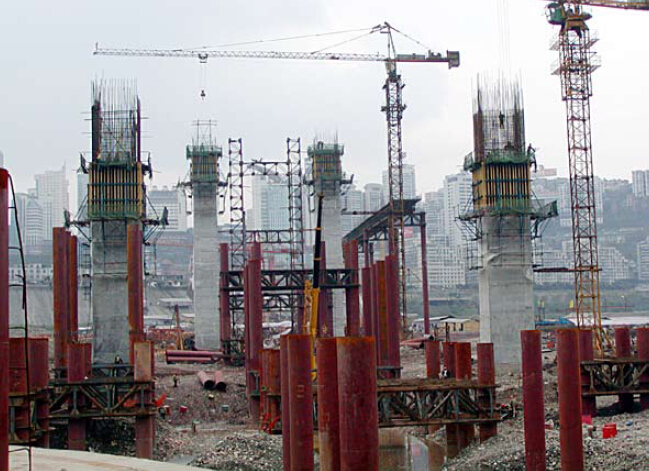
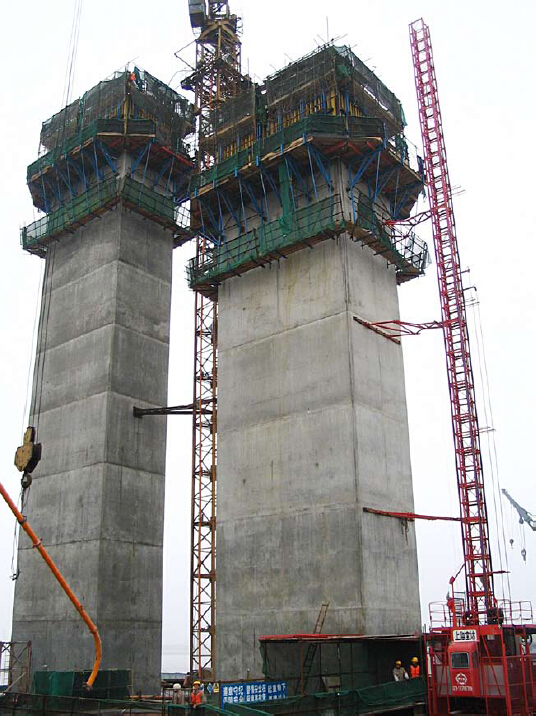
- Q: How does steel formwork accommodate for different concrete compaction methods?
- Steel formwork is an adaptable construction material capable of accommodating various concrete compaction methods with ease. Its strength and rigidity are key advantages, allowing it to withstand the forces exerted during compaction techniques. When utilizing compaction methods such as hand tamping or a vibrating poker, steel formwork provides a stable and secure surface for applying the necessary forces. The rigid and tightly connected steel panels ensure that the concrete remains in place and maintains its shape throughout the compaction process. This facilitates efficient and effective compaction, resulting in a uniform and high-quality concrete finish. In instances where mechanical compaction methods such as plate compactors or vibrating rollers are employed, steel formwork readily adapts to the added weight and vibrations. The robustness of the steel panels enables them to support heavy equipment and absorb vibrations without deformation or cracking. This guarantees even compaction of the concrete, eliminating any potential weak spots or voids. Moreover, steel formwork can be easily adjusted and modified to accommodate diverse compaction methods. The panels can be effortlessly repositioned or removed to allow proper access and movement for compaction equipment. Additionally, steel formwork can be tailored to specific shapes and sizes to meet the requirements of the compaction method employed. In summary, steel formwork offers a dependable and flexible solution for accommodating various concrete compaction methods. Its strength, rigidity, and adaptability make it an ideal choice for construction projects that necessitate efficient and effective compaction techniques.
- Q: What are the typical safety precautions when working with steel formwork?
- When working with steel formwork, some typical safety precautions include wearing appropriate personal protective equipment (PPE) such as gloves, safety glasses, and steel-toed boots to protect against potential hazards. Additionally, workers should receive proper training on the proper handling and installation techniques of steel formwork systems. It is essential to ensure that the formwork is securely supported and adequately braced to prevent collapse or accidents. Regular inspection of the formwork for any damages or defects is also crucial to maintain a safe working environment.
- Q: Can steel formwork be used for both horizontal and vertical concrete placement?
- Yes, steel formwork can be used for both horizontal and vertical concrete placement. Steel formwork is a versatile and durable solution for creating molds or frames that hold wet concrete in the desired shape until it sets and hardens. This type of formwork is commonly used in construction projects for various applications, including both horizontal and vertical concrete placement. Steel forms are strong enough to withstand the weight and pressure of the concrete, making them suitable for vertical applications such as walls, columns, and beams. Additionally, steel formwork can be easily adjusted or modified to accommodate different shapes and sizes, making it ideal for horizontal placements like slabs, floors, and pavement. Overall, steel formwork offers flexibility, strength, and stability, making it suitable for a wide range of concrete placement requirements.
- Q: How does steel formwork contribute to improved construction efficiency?
- Steel formwork contributes to improved construction efficiency in several ways. Firstly, steel formwork is durable and long-lasting, allowing it to be reused multiple times. This reduces the need for frequent replacement and lowers overall construction costs. Secondly, steel formwork is lightweight and easy to assemble, making it quick to install and dismantle. This saves time and labor during the construction process. Additionally, steel formwork provides a smooth and even surface finish, resulting in high-quality concrete structures. This eliminates the need for extensive polishing or plastering work, further enhancing construction efficiency. Overall, steel formwork improves construction efficiency by reducing costs, saving time, and ensuring superior concrete finishes.
- Q: Can steel formwork be used for tall structures?
- Indeed, tall structures can be constructed using steel formwork. With its versatility and durability, steel formwork proves to be an excellent option for erecting towering buildings. Its notable advantages, including high strength, rigidity, and stability, make it the ideal choice for such structures. The ability of steel formwork to withstand the immense pressures exerted by fresh concrete ensures a smooth and uniform surface finish. Moreover, its reusability not only reduces construction costs but also minimizes the environmental impact. Furthermore, steel formwork allows for precise customization and effortless adaptation to various architectural designs and structural requirements. In conclusion, when it comes to constructing tall structures, steel formwork stands as a dependable and efficient solution.
- Q: What are the different types of lifting systems used with steel formwork?
- There are several types of lifting systems commonly used with steel formwork in construction projects. These lifting systems are designed to facilitate the transportation and installation of steel formwork panels, which are used to create the molds for concrete structures. Here are some of the different types of lifting systems used with steel formwork: 1. Crane lifting system: This is one of the most common and widely used lifting systems. It involves using cranes with hooks or specialized lifting attachments to lift and move the steel formwork panels to their desired location. Cranes provide the necessary strength and stability to handle heavy loads and are often used in large-scale construction projects. 2. Forklift lifting system: Forklifts are another popular option for lifting and moving steel formwork panels. These vehicles are equipped with forks that can slide under the formwork and lift it off the ground. Forklifts are particularly useful in smaller construction sites or areas with limited space, where cranes may not be feasible. 3. Hydraulic lifting system: Hydraulic systems utilize hydraulic power to lift and move the steel formwork panels. These systems are often integrated into the formwork itself, allowing for controlled lifting and lowering of the panels. Hydraulic lifting systems are known for their precision and ease of use. 4. Manual lifting system: In some cases, manual labor is used to lift and move steel formwork panels. This method typically involves a team of workers using ropes, chains, or other lifting tools to manually hoist the formwork into position. Manual lifting systems are usually employed for smaller formwork panels or in situations where other lifting systems are not available. 5. Self-climbing lifting system: Self-climbing systems are commonly used in high-rise construction projects. These systems are designed to lift and move the steel formwork vertically as the construction progresses. They often utilize hydraulic or mechanical mechanisms to lift the formwork to the next level, allowing for efficient and continuous construction. 6. Tower crane lifting system: Tower cranes are tall, freestanding cranes that are commonly used in large construction projects. They can lift and move steel formwork panels to various heights and locations on the construction site. Tower cranes offer excellent reach and versatility, making them suitable for projects with complex formwork requirements. Overall, the choice of lifting system for steel formwork depends on factors such as the size and weight of the formwork panels, the construction site's characteristics, and the specific requirements of the project. It is important to select the appropriate lifting system to ensure the safe and efficient installation of steel formwork.
- Q: What are the considerations when selecting the thickness of steel formwork?
- When selecting the thickness of steel formwork, there are several important considerations to take into account. Firstly, the load-bearing capacity of the formwork needs to be considered. The thickness of the steel should be able to withstand the weight of the concrete and any additional loads that may be applied during construction. This includes factors such as the height and pressure of the concrete pour, as well as any equipment or workers that may be on the formwork. Secondly, the durability and longevity of the steel formwork must be considered. The thickness should be chosen to ensure that the formwork can withstand the wear and tear of construction activities, as well as any potential exposure to environmental factors such as corrosion or extreme weather conditions. Thicker steel can provide greater strength and resistance to these factors. Another important consideration is the desired surface finish of the concrete. Thinner steel formwork may result in a smoother surface finish, while thicker formwork may leave a more textured or patterned finish. The thickness should be selected based on the desired aesthetic outcome of the project. The cost of the steel formwork is also a significant consideration. Thicker steel is generally more expensive than thinner steel, so it is important to find a balance between the required strength and the available budget. In some cases, a combination of different thicknesses may be used to optimize cost-effectiveness. Lastly, the ease of handling and installation should be considered. Thicker steel formwork can be heavier and more challenging to handle, so the available equipment and labor resources should be taken into account. The thickness should be chosen in a way that ensures safe and efficient installation. In conclusion, when selecting the thickness of steel formwork, it is essential to consider the load-bearing capacity, durability, desired surface finish, cost, and ease of handling. By carefully evaluating these considerations, one can select the most appropriate thickness for the specific construction project.
- Q: Can steel formwork be used for high-rise construction projects?
- Indeed, high-rise construction projects can indeed utilize steel formwork. Renowned for its robustness and resilience, steel formwork is ideally suited for demanding tasks like high-rise construction. It furnishes exceptional steadiness and reinforcement to the concrete throughout the pouring and solidifying stages, guaranteeing the building's structural soundness. Moreover, steel formwork can be swiftly assembled and disassembled, making it highly efficient for constructing tall edifices that encompass multiple floors. Furthermore, its reusable characteristic facilitates long-term cost savings. In summary, steel formwork is an esteemed and widespread preference for high-rise construction endeavors.
- Q: Can steel formwork be used for water retaining structures?
- Water retaining structures can indeed utilize steel formwork. One of the notable characteristics of steel formwork is its strength, durability, and ability to withstand high pressures. When designed and constructed correctly, steel formwork can establish a watertight seal and effectively resist the hydrostatic pressure exerted by water. Moreover, steel formwork facilitates a uniform and smooth finish, minimizing the chances of water leakage. However, it is crucial to implement appropriate waterproofing measures, including the use of suitable sealing materials and techniques, to prevent potential water leakage or seepage through joints or connections. Consistent inspection and maintenance are also indispensable to ensure the long-term integrity of the water retaining structure.
- Q: What are the characteristics of steel formwork
- 5, good insulation performance, is conducive to the preservation of concrete in winter.6, easy maintenance, can be repaired in the local damage surface, when one side wear, you can flip the use of the plate.
Send your message to us
Climbing Bracket CB240 for Formwork And Scaffolding Systems
- Loading Port:
- Tianjin
- Payment Terms:
- TT OR LC
- Min Order Qty:
- 50 m²
- Supply Capability:
- 1000 m²/month
OKorder Service Pledge
OKorder Financial Service
Similar products
Hot products
Hot Searches


